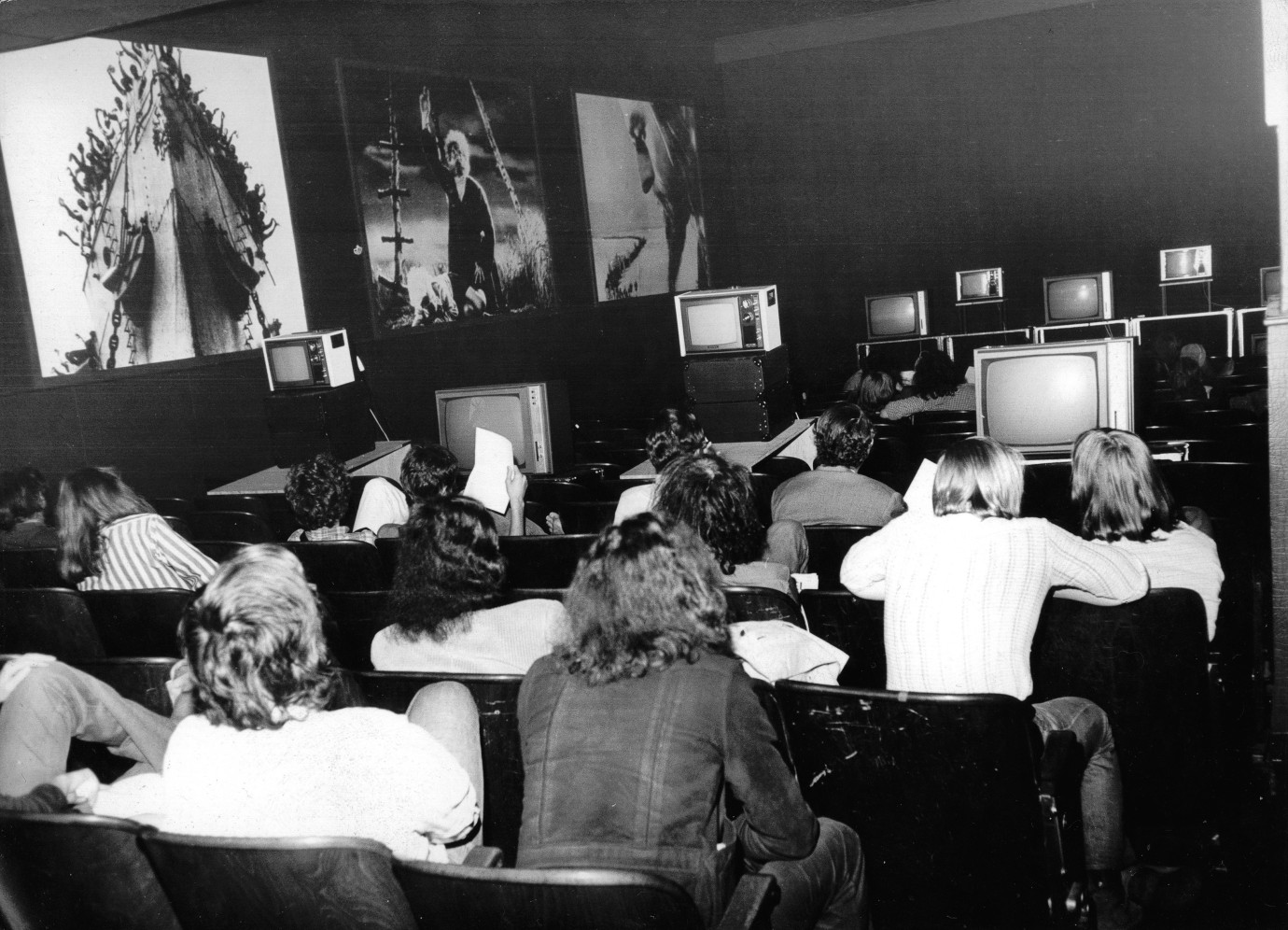Time Tunnel: Takahiko Iimura at Kino Arsenal, 18. April 1973


Time Tunnel: Takahiko Iimura at Kino Arsenal, 18. April 1973 by Takahiko Iimura
JPN, USA 1973, Forum Expanded
© Arsenal – Institut für Film und Videokunst e.V.
In 1973 the Kino Arsenal – then in its Welserstraße location in Berlin-Schöneberg – showed a programme of videos by the Japanese artist Takahiko Iimura. At the time, it was not yet possible to project the video images on the screen at the Arsenal, so employees brought in their own televisions from home, which were then synchronised to facilitate a collective experience of the then novel medium. Showing all the videos from the programme that are still available today, the installation commemorates both this evening as well as the pioneer of experimental film himself, who died in July 2022.
Courtesy MORI YU Gallery
Cooperation Preparatory Office for Takahiko Iimura Archiving, VCT/Videoart Center Tokyo
This work is part of the project “Arsenal 60 ff.,” funded by Haupstadtkulturfonds
Crew
| Director | Takahiko Iimura |

Exhibition opening
Time Tunnel: Takahiko Iimura at Kino Arsenal, 18. April 1973 · Forum Expanded · Feb 15, 2023
Takahiko Iimura
Takahiko Iimura (1937–2022) was a Japanese artist and filmmaker. Based in Tokyo and New York for most of his life, Iimura’s artistic practice spanned across experimental film, video art, expanded cinema, installation, and media art. Collaborating with many of the 1960s Japanese avant-garde, Iimura was instrumental in bringing together art and film in a burgeoning postwar experimental film scene. His films are often conceptually driven in a way that asks audiences to reflect on the materiality of media and the elusivity of time. As a prolific writer and co-editor of film journal “Kikan Film,” he reported on his experiences exhibiting internationally and became a conduit between the Japanese and international art scenes.
Filmography (selection)
1962 Shikan ni tsuite (On Eye Rape); 10 min. · Iro (Color); 12 min. · Ai (Ai (Love)); 10 min. 1963 Sakasama (Upside Down); 14 min. 1964 Ura to omote (Inside & Outside); 2 min. 1966 Watashi wa kage o mita (I Saw the Shadow); 13 min. · New York Scene; 40 min. · New York Video Diary; 47 min. 1968 Summer Happenings, U.S.A.; 23 min. 1969 Film-makers; 28 min. 1970 Film Strips; 24 min. · Buddha Again; 17 min. · Isu (A Chair); 10 min. · Blinking; 18 min. 1971 Shutter; 25 min. · Time; 5 min. · Moon Timed; 15 min. · Time Tunnel; 35 min. 1972 Timed 1,2,3; 8 min. · Counting: 1 to 100 or Xs (From Models, Reel 2); 12 min. 1973 Register Yourself: Berlin Tape; 30 min. · Register Yourself: New York Tape; 39 min. 1974 Self Identity; 41 min. 1975 Observer/Observed; 20 min. 1976 Shifting; 22 min. 1978 MA (Intervals); 17 min. 1979 I=You=He/She; 30 min. 1982 A・I・U・E・O・NN ; 10 min. 1984 Ayers Rock; 40 min. 1987 I Love You; 5 min. 1990 Monet no suiren no niwa no ho e (To the Garden of Water Lilies); 31 min. 1995 Performance/Myself; 29 min. 2023 Time Tunnel: Takahiko Iimura at Kino Arsenal, 18. April 1973
Bio- & filmography as of Berlinale 2023
